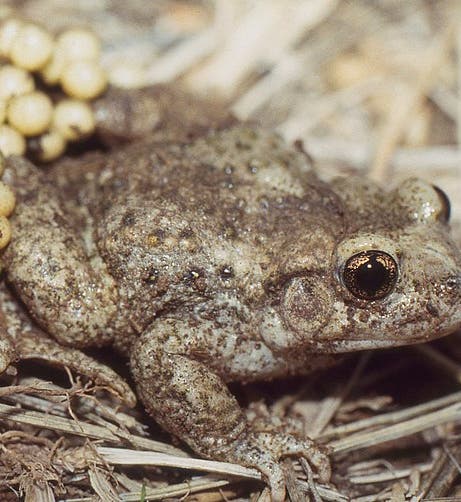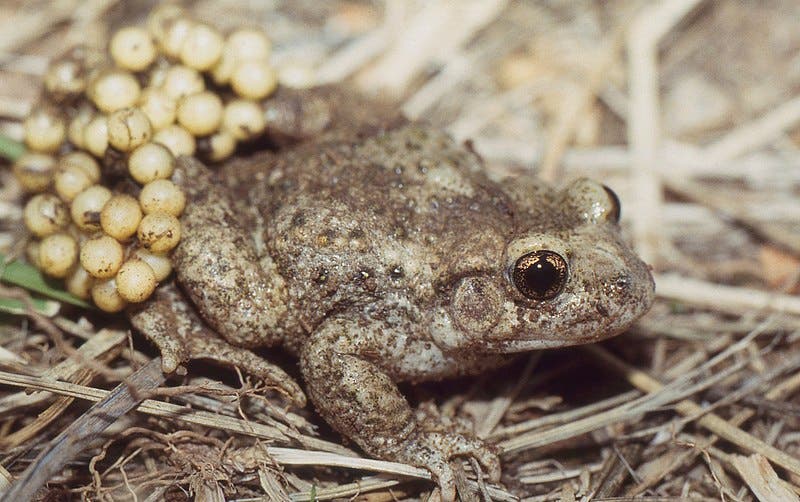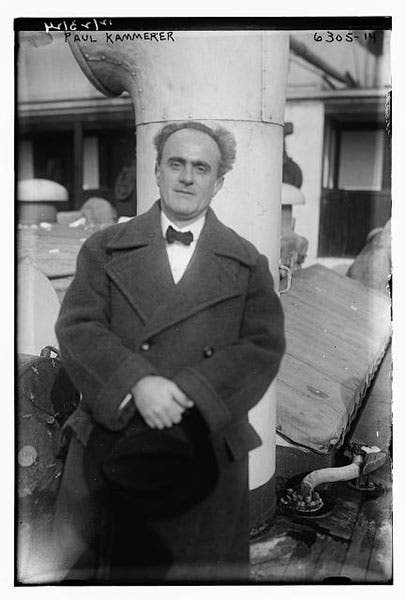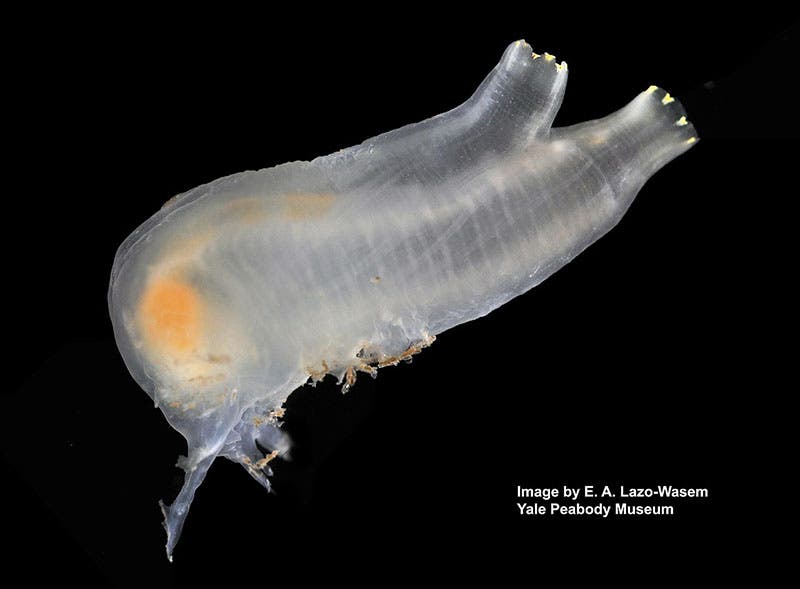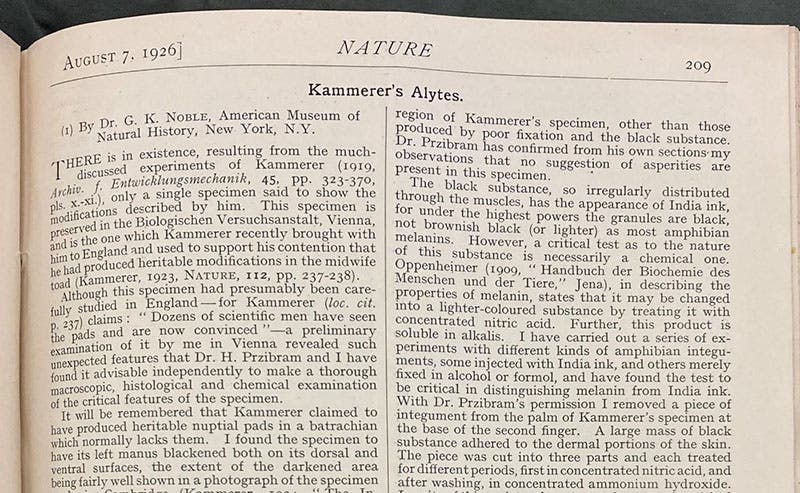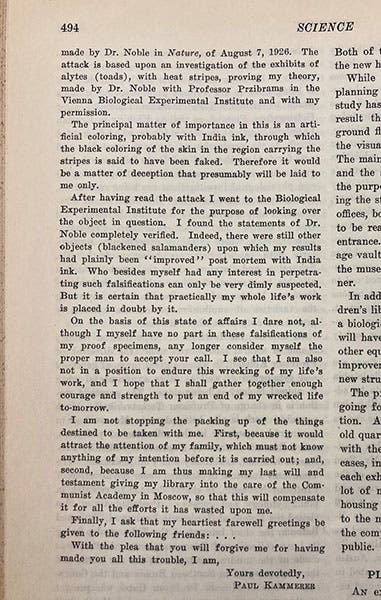Scientist of the Day - Paul Kammerer
Paul Kammerer, an Austrian biologist, was born Aug. 17, 1880. Beginning in the 1910s, Kammerer performed a series of laboratory experiments in which he sought to demonstrate the validity of Lamarckian evolution. Jean-Baptiste Lamarck in the early 19th century had argued not only that organisms evolved (which was a novel idea in 1809) but that they evolved by acquiring new characters during their lifetime, which were then passed on to their offspring. Charles Darwin in 1859 offered an alternative mechanism for evolution, natural selection, which did not involve the inheritance of acquired characters, and Lamarckian evolution went into general eclipse. While Lamarckism did manifest a revival around the turn of the century among evolutionists, the recovery of Mendelian genetics in 1900 reversed that trend, as Mendel's genetics was perfectly compatible with natural selection, but not so much with Lamarckian inheritance.
Kammerer's best-known experiments involved the midwife toad (Alytes obstetricans), an amphibian, the male of which carries the fertilized eggs about on its back. The midwife toad mates out of water, and apparently quite successfully. Kammerer forced the toads to mate in the water, and he claimed that after several generations of this, the males acquired "nuptial pads," callosities on the feet that help the male hold on to the slippery female in the water, and he furthermore claimed that these pads – acquired characters – were passed on to the offspring, thus demonstrating Lamarckian inheritance.
Kammerer did a similar kind of experiment with a tunicate, Ciona intestinalis, which has a pair of siphons (third image). He cut off the siphons and claimed that the siphons regenerated, only they were longer than before. The offspring exhibited the longer siphons, and so they must also have inherited an acquired characteristic.
The only problem is that no one could confirm any of Kammerer's experiments, whether with toads, or tunicates, or any other organisms Kammerer had experimented on. In 1926, an American biologist, G. K. Noble, was allowed to examine in Vienna one of the toads with the supposedly thickened pads, and he found that the pads were not thicker, just darker, and they were darker because they had been injected with India ink. His devasting article appeared in Nature on Aug. 7, 1926 (fourth image). I don’t know when Kammerer saw it, but he wrote a letter on Sep 22, 1926, to the Moscow Academy of Sciences, which had supported his work, confirming that Noble was right about the ink, describing his mortification, and suggesting that an assistant must have done the dastardly deed. He then wrote: "I see that I am also not in a position to endure this wrecking of my life's work, and I hope that I shall gather enough courage and strength to put an end to my wrecked life tomorrow." The strength was apparently gathered, as the next day, Sep. 23, Kammerer put a bullet in his head. The public suicide note was then published in Science on Nov. 19, 1926 (p. 493 of vol. 64), which was the source for my quotation. We include here a scan of the second page of the letter (which is most of it; fifth image), as well as a detail of the final paragraphs (sixth image).
Kammerer and his experiments disappeared rather quickly from the literature, until 1971, when the novelist Arthur Koestler wrote The Case of the Midwife Toad, in which he tried to exonerate Kammerer, accepting Kammerer’s claim that his toads were tampered with by a rival or enemy, and arguing that many of his experiments did indeed reveal real-life Lamarckian evolution (Koestler was a renegade Lamarckian himself). In more recent years, at least one scholar has suggested that Kammerer might have been the first to discover what are now called epigenetic phenomena, in which development is altered permanently by turning genes on or off, without changing the actual genetic structure, so that certain acquired traits can be passed on. However, most historians of biology have rejected that argument. The problem with defending Kammerer is that practically nothing he did in his career was above suspicion; he was known, for example, to have enhanced photographs of spotted salamanders when the photographs did not show the alterations that he claimed he could see with his own eyes. Hardly anyone believes in the mysterious enemy who crept into his lab and injected his specimens with ink. Kammerer was, most likely, just what everyone in the 1920s said he was: an unscrupulous experimenter, who saw what he wanted to see in his experiments, and then did whatever was necessary to make others see those same results.
The only redeeming feature of Kammerer’s life that I could find is that he managed to attract the attention of Anna Mahler. Admittedly, that was not hard to do, as Gustav Mahler, Walter Gropius, and Franz Werfel, husbands all of Anna, could attest. Still, in 1911 and 1912, Alma assisted Kammerer in his lab in Vienna, when he was experimenting to see whether spotted salamanders, reared in an environment of colored sand, acquired any of that coloring and passed it on. Kammerer, like everyone else in Vienna, fell madly in love with Anna, proposed, and threatened to shoot himself if she refused. She did, and he did not, at least not for another 14 years. I wish Tom Lehrer had included Paul in his song about Anna, if for no other reason than to see what he came up with to rhyme with Kammerer.
Kammerer wrote a number of books, but we do not have a single one in our collections. We do however have most of the German and Russian journals in which he published, and we have the issues of Science and Nature, with the articles that led to and documented his suicide. And we have Koestler's The Case of the Midwife Toad, which I have read, and do not recommend that you add to your reading list.
William B. Ashworth, Jr., Consultant for the History of Science, Linda Hall Library and Associate Professor emeritus, Department of History, University of Missouri-Kansas City. Comments or corrections are welcome; please direct to ashworthw@umkc.edu.

